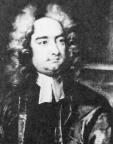There has over the years been a growing library of books on the subject of overseas ‘relict hominids’
believed to survive in modern times in the remote and little explored corners of the world. The
Yeti, or ‘dweller among the rocks’ of Himalayan folklore, and the Sasquatch, or ‘Bigfoot’ of North
American Indian tradition are best known.
Less well known are primitive hominid forms believed to inhabit places such as the African
Congo, the jungles of South America, Russia, China, India, parts of island south-east Asia, New
Guinea, island Melanesia, New Zealand and Australia.
Indeed, until I Rex Gilroy, was able to first publicise the ‘hairy man’, in the Australian and then
world-wide media, few people even within this country had ever heard the name ‘Yowie’.
Our book “Giants from the Dreamtime – the Yowie in Myth and Reality” [URU Publications 2001] the first book
ever written on the mystery, certainly changed that and has become THE text book for sensible field
researchers. Now “The Yowie – Living Fossils from the Dreamtime” [URU Publications] goes much
further, in a scientific manner as before in language that the lay reader can easily understand [which is
how we prepare all our books], to present a startling array of evidence, to reveal the Yowie and its
origins. This book is needed, because since the publication of “Giants from the Dreamtime” much new
fossil and other evidence has been uncovered, which has added further to our knowledge.
It will leave
little doubt that the Yowie is a flesh-and-blood, living ‘relict hominid’, a survivor of Ice-Age times
which, in the form of Homo erectus, is our immediate ancestor. ‘He’ is our ‘father’ and as such
deserves far better respect than ‘he’ has been given over the years, not only by an ignorant media, but
also by those ill-informed and un-trained “Yowie catchers” who treat him as nothing more than a hairy
monster! Ancient Aboriginal myth and legend has always described the “hairy people” as flesh and blood
hominids, and much the same picture is formed in the relict hominid folklores of the Polynesian and
Melanesian people outside Australia, as well as those of south-east and mainland Asia.
The reader who wishes to pursue this aspect further can find “hairy man” tales among the
ancient writings of the Sumerians and Chinese, whose ancient mariners had considerable contact with
Australia in Bronze-Age times [ie 2000-1400BC] and the name ‘Yowie’ can be found in a number of
variations in ancient Chinese literature on the subject of the mysterious animals and people that
inhabited the “Great South Land of Chui Hiao [Great Golden Land]”.
This ancient literature is
revealed in “Giants from the Dreamtime – The Yowie in Myth and Reality” .
For example, ancient Aryan Indian folklore speaks of mysterious “cave men and women” that
inhabited the mountains and forests; beings such as the Kim-Purusha or “What Man?” often described
as a primitive, almost animal-like being who feeds upon human flesh.
Then there is the Kotavi, aka the
Kotari or Kottavi, “A naked woman”, a mystical goddess that inhabited the forest and often described
today as a primitive-looking female. There is also the Kuvera, which the Vedas describe as a male forest
spirit who hugs the shadows in the darker parts of the forest. He is an evil-looking primitive being who
also lives upon human prey. Perhaps the Kuvera and the Kim-Purusha are one-and-the-same beings,
the Kotari or Kottavi being the female of the same race.
Ancient Indian mythology also speaks of other cavemen, such as Guhyaka, a race responsible for the protection of the treasure of Kubera, the Giant God of the spirits and guardian of the North.
Here in myth is a race-memory of Stone-Age people and giants. Another such cave-dweller was Hidimba, an asura or demon cannibal who lived in the forest
where ‘he’ lured people into his bone cave to eat them.A similar Stone-Age demon was Jambha, meaning ‘jaws’. He was killed by Vishna. Indians also
believe in the Kala-Mukha or “black-face”. These are a race of wilderness-dwellers who resemble
humans.
Rex Gilroy
Australian Yowie Research Centre,
Katoomba, NSW
Monday 25th June 2007






